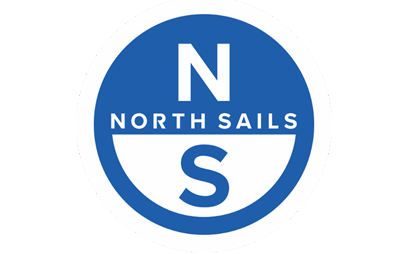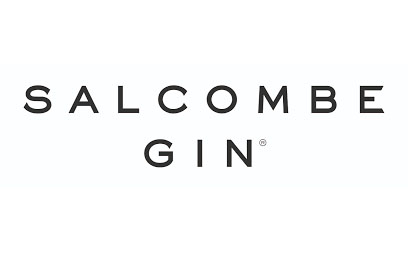
A brief History of the RORC
compiled by Janet Grosvenor
The Objectives of the RORC
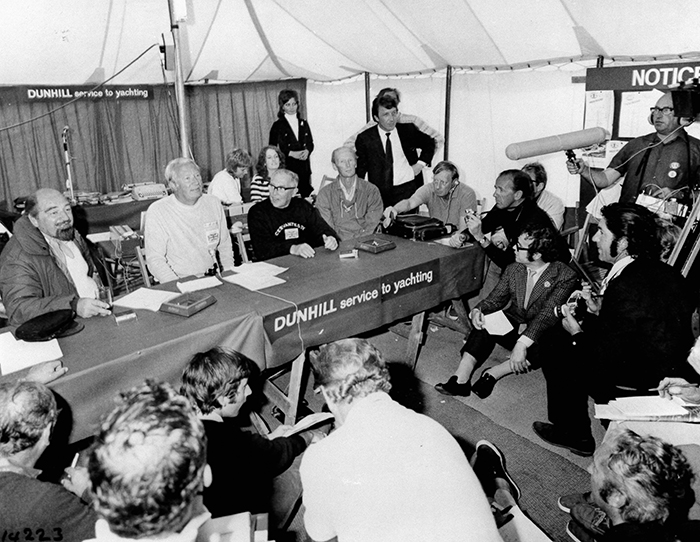
To encourage ocean, long distance and other forms of yacht racing and yachting activity, including the giving of prizes, which may from time to time be determined by the Committee.
To study and encourage the design, building, navigation and sailing of sailing vessels in which speed and seaworthiness are combined by any means including scientific research and practical demonstration.
To foster and encourage the study and practice of navigation and seamanship.
To provide and maintain Clubhouse facilities for the use of members of the Club.
Key facts about the Royal Ocean Racing Club
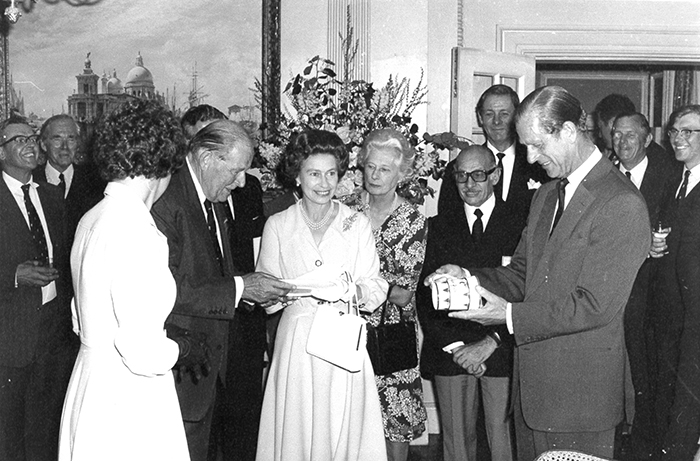
5th November 1931
The Ocean Racing Club was granted a “Royal Warrant” by King George V.
1928 Channel race
250nm triangular course in the Channel – introduced as a shorter alternative to the Fastnet for smaller yachts.
1930’s races included
Plymouth-Benodet; Falmouth-Clyde; Southsea-Brixham; Ijmuiden-Solent; Plymouth-La Baule and St Nazaire-Benodet.
1935
would see the Cowes-Dinard race revived – its Challenge Cup was originally donated to the Club Nautique de la Rance by King Edward VII in 1906.
By 1946
the RORC calendar had six regular races including the North Sea Race to the Hook of Holland.
The Royal Ocean Racing Club has always maintained strong links with the Royal Yachting Association and World Sailing.
In addition to a full domestic season, transatlantic races and racing in the Caribbean the Club has events in the calendar which are run in association with the Club. Currently (2023) they include:- Rolex China Sea Race; Dubia-Muscat Race; East Coast Race; Rolex Middle Sea Race; Dun Laoghaire to Dingle Race; La Trinite – Cowes Race; Hong Kong – Vietnam Race; Raja Muda (Selangor International Regatta)
More details can be found in Ian Dear’s book The First 75 Years of the Club – available from the Club.
Past Commodores & Admirals | Rating Office | The Griffin Fund
In the beginning
In 1924, Joseph Weston Martyr, returned to England having taken part in the Bermuda Race. He wrote an article in Yachting Monthly, extolling the excitement and exhilaration of ocean racing and challenging British yachtsmen to take it up. "It is without question the very finest sport that a man (or woman) can possibly engage in."
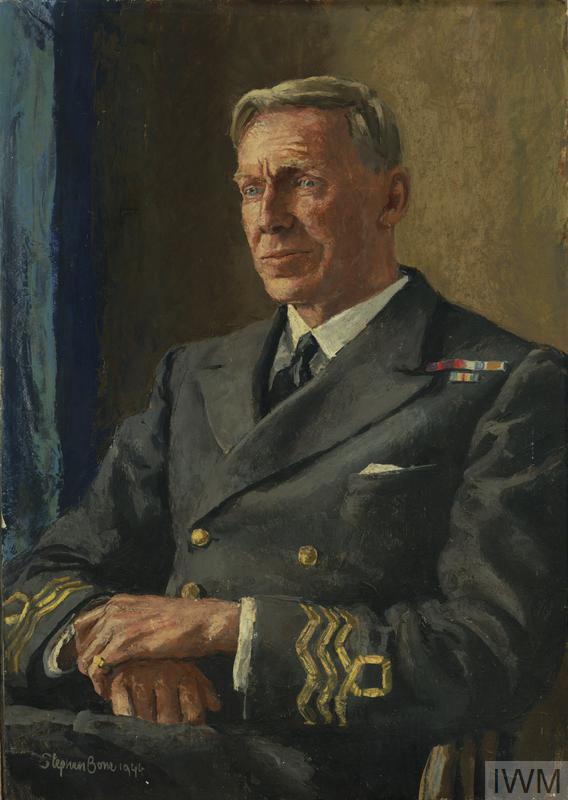
© Art.IWM ART LD 4077 The first RORC Commodore (owner of Jolie Brise) Lt Cmdr E G Martin OBE, RNVR
Martyr’s enthusiasm stirred a cord amongst a small group of yachtsmen. One of these was Evelyn George Martin, then cruising editor of Yachting World. Together with the editor of Yachting Monthly, Malden Heckstall-Smith, they met Martyr to discuss the possibility of arranging an ocean race in British waters. They also approached a number of eminent yachtsmen, including Sir Ralph Gore Bt and the King’s Sailing Master, Sir Philip Hunloke to gain their support for the project.
In 1925 the first Fastnet Race (then known as the Ocean Race) started on 15 August from Ryde on the Isle of Wight, going east out of the Solent, round the Fastnet Rock and finishing in Plymouth. Open to yachts of up to 50ft LWL rated through the Boat Racing Association’s measurement system. From the original 15 entries there were 7 starters. All working boats except the 1896 vintage cutter, Gull. Jolie Brise wins in 6 days 14 hours and 45 minutes. Over dinner at the finish in Plymouth’s Royal Western Yacht Club the new Ocean Race was formed. The first Commodore (owner of Jolie Brise) Lt Cmdr E G Martin OBE,RNVR was appointed.
The first objective was:
"To provide annually one ocean race not less than 600 miles in length"
The Club was officially formed on 9th October with members paying an annual subscription of £1.
To be eligible for election to the Club a yachtsman had to be an amateur and have competed in one of the Club’s ocean races either as owner or crew.
There is no record of the exact date when the Club’s Seahorse crest was designed. The idea originated from a wooden carving of a boat’s badge George Martin made during the First World War. It was not an exact copy of the real creature (Hippocampus vulgaris) but an heraldic variation-dubbed Hippocampus rorcus by a future Secretary, Alan Paul – it has its tail boldly curled the opposite way to that which nature had decreed.
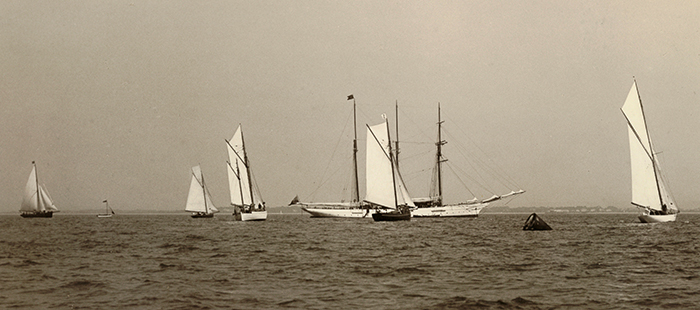
The first Fastnet Race Start
1947
Following WW11 racing resumed with the Club creating new classes formed based on length and performance. Class 1 (LWL 38+ft<60ft rating), Class 11 (LWL 27.5-38 27.5<38ft rating), Class 111 (LWL 19-27.5ft<27.5 rating). Class 1 and 11 were eligible for the Fastnet race. The season was dominated by John Illingworth’s new Myth of Malham - a Laurent Giles design to Illingworth’s conception with a light displacement, no sheer or bulwarks and short overhangs, plus a headsail dominant rig, exploiting the RORC rule. She wins the Channel Race and Fastnet Race.
MacLean Buckley becomes Admiral.
1948
Two of the RORC’s longest-serving staff appointed: Secretary Alan Paul (known as The Apostle or “Possle” for short. He was an amateur yacht designer qualified for the Club in 1935 and a committee member since 1937. His Assistant Hope Kirkpatrick, an ex-ATS officer and a one-time concert pianist.
John Illingworth becomes Commodore.
1949
For the first time the Fastnet Race starts from the RYS line in Cowes, heading westwards, leaving the Scillies to port on the return leg. A building westerly wind caused many of the fleet to retire due to sea sickness or gear failure. The last arrivals finished after 10 days. Myth of Malham wins her second Fastnet Race by eight hours over Bloodhound.
1950
A very varied programme with most races being over 200 miles. Races included:- Dover to Kristiansand (480 miles), Arendal to Copenhagen (220 miles); Copenhagen to Kiel (200 Miles); Transatlantic (Bermuda to Plymouth 2870 miles), Plymouth to Santander (440 miles); Santander to Belle Ile (233 miles). The North Sea, Cowes-Dinard and Channel Race were established regular events.
Freehold acquired for 20 St James’s Place for £17,500
Robert Somerset appointed Commodore.
1951
Fastnet winner, Yeoman, is presented to the Club by Owen Aisher and his partners and renamed Griffin II. 15 races held – the most in the RORC’s annual calendar to date. The Fastnet attracts 29 starters from seven nations, including Australia making its debut with Phil Davenport’s Waltzing Matilda. Sever weather causes many retirements. Line honours go to the Swedish-owned Circe, designed by Olin Stephens and skippered by brother Rod, but Owen Aisher’s Yeoman III wins by five and a half hours on corrected time.
1953
Annual membership subscription raised to six guineas and race entry fees changed to a ‘per crew’ basis. Hot topic of debate: Allowing small boats to compete in the Fastnet Race as they are permitted to in the Bermuda Race. This was eventually passed with Class 3 cleaning up – Sir Michael Newton’s Favona winning the Fastnet Challenge Cup.
The Club’s first lady Rear Commodore elected – the Hon. Ray Pitt-Rivers (owner of Foxhound).
Myles Wyatt appointed Commodore.
1955
New race from Dartmouth to Gibraltar introduced, albeit with only three starters. The technology game increases pace: John Illingworth’s Mouse of Malham, with a mere 24ft LWL, sets a new trend in yacht design by separating its skeg rudder from the keel while Fastnet winner Dick Nye’s Carina II is the first to use synthetic sails.
1956
Severe weather dogs the Cowes-Plymouth Race and Plymouth-Belle, but especially the Channel Race when a four day long gale destroys Bloodhound’s storm sails. She is saved by successfully anchoring just of Selsey Bill, while Selwyn Slater’s cutter Uomie is abandoned and Fred Cartwright’s Tilly Twin is run up the Bognor Regis beach.
1957
Admiral’s Cup: Following discussions over how to get more American teams to compete in the UK, the Admiral’s Cup is conceived. Teams from the USA and Great Britain compete for a trophy donated by Peter Green, Sir Myles Wyatt, John Illingworth, Geoff Pattinson and Selwyn Slater, initially known as the 1957 Gold Cup. Admiral’s Cup races include Cowes Week’s Britannia Cup and New York Yacht Club Cup, plus the Channel Race (counting double points) and culminates in the Fastnet Race (counting triple).
In future years the Admiral’s Cup spawns the Southern Cross (Australia), Onion Patch (USA East Coast), Kenwood Cup (Hawaii), Sardinia Cup, and IOR Ton Cups. The Fastnet is one of the toughest on record so far, alongside 1927, 1930 and 1949, with 29 retirements from 41 starters. The Admiral’s Cup is contested by three boat teams, with England fielding Jocasta, Myth of Malham and Uomie against the US trio of White Mist, Bill Snaith’s Figaro and Carina II. The English won by just 70 points to 68. Carina II is the overall Fastnet Race winner, her second consecutive victory.
1951 Fastnet winner Yeoman III is given to the club by Owen Aisher, Sir Giles Guthrie and Charles Gardner to become the new Griffin training boat. Simba sounders now permitted equipment.
Vernon Salisbury appointed Commodore, Sir Myles Wyatt becomes Admiral.
1958
RORC purchases No. 19 St James’s Place for £18,050 but cannot move in because of a tenant. Programme of 14 races considered as excessive by some members.
1959
In the second Admiral’s Cup, England, represented by Myth of Malham, Griffin II and Selwyn Slater’s new yacht Ramrod, again Britain narrowly wins, this time beating a Dutch team by 135 points to 123. The Swede S&S designed Class II yawl, Anitra, wins the Fastnet Race with Mike Richey as navigator.
1961
Over three years the total number of starters almost doubles to 590. Classes refined: Class 1 - 30-70ft rating; Class 2 - 24-30ft rating; Class 3 - 19-24ft rating. Channel Race has 110 entries. Admiral's Cup teams include the USA, France, Holland and Sweden, while Britain fielded Myth of Malham, Griffin II and Ren Clarke's Quiver III. Great Britain is roundly beaten by the US team. A heavy weather Fastnet attracts 95 starters and is won by Dutchman Otto van der Vorm's Zwerver, despite being hove to for five hours. At 37, Peter Green becomes the club's youngest ever Commodore.
1962
Long distance race was Cowes to San Sebastian followed by a race from San Sebastian to Belle Ile. To coincide, a race from Cowes to Dartmouth and then to Belle Ile was organised. The Duke of Edinburgh acquires Bloodhound. Rating-wise, 2000 yachts in Britain are measured, 700 in Scandinavia, 80 in Germany, 700 in Holland and 500 in France.
1963
Derek Boyer and Dennis Miller’s Clarion of Wight, Ron Amey’s Noryema III and Max Aitken’s Outlaw chosen for English Admiral’s Cup team, winning against six nations and, for the first time since the war, Germany. Clarion wins the Fastnet Challenge Cup, after a hard race causes carnage across the fleet. Transatlantic race – Newport, Rhode Island to the Eddystone. Organised by the Annapolis Yacht Club, the New York Yacht Club and the RORC.
1964
Long distance race – Solent to Santander (500 miles) followed by Santander to La Trinite (240 miles). First GRP boats – Nicholson 32s – compete. Record number of starters in the Cowes Dinard Race – 129, with 652 yachts competing across 12 events during the year.
1965
Technical developments include rod rigging on Firebrand and America’s Cup tank test data being used. The Dick Carter-designed Rabbit features a spade rudder completely separate from her keel. Baron de Rothschild’s Gitana IV sets a new Fastnet course record of 3 days, 9 hours and 40 minutes. First One Ton Cup held in Le Havre, boats having a maximum RORC rule rating of 22ft, racing boat-on-boat without handicap. The event is won by the Danish Diana III. The event strikes such a chord that it inspires many purpose-built One Tonners to be built. Mike Vernon becomes Commodore. 965 starters across the club’s events with Class 3 swelling as Class 1 declines. Classes 2 and 3 are split.
1966
Long distance races Harwich-Copenhagen (630 miles), Yarmouth to Lequeitio (500 miles), Lequeitio to La Trinite (240 miles)
1967
Nine nations compete for the Admiral’s Cup including, for the first time, Finland and Spain. Australia fight hard and earns its inaugural victory with Robert Crichton-Brown’s Balandra, Caprice of Huon and Mercedes III. French offshore legend, Eric Tabarly and Pen Duick III, win the Fastnet Race.
Discussions start between RORC and the Cruising Club of America to consider each club giving up its own rule for a new international one. Olin Stephens and Dick Carter were two of the new rule’s most active supporters. A technical committee, chaired by Olin Stephens, started work on the new rule.
1968
International Offshore Rule (IOR) announced by EP De Guingand, Chairman of the Co-ordinating Committee, David Fayle and Robin Glover, RORC Chief Measurers, US designers Olin J Stephens II and Dick Carter and Commodore David Edwards. It will become the most successful rule of all time in yachting. Hot topic: Sponsorship in yachting.
David Edwards is appointed Commodore, while Owen Aisher becomes Admiral upon the death of Sir Myles Whatt.
1969
In January 1969 the Commodore, David Edwards, announced the new International Offshore Rule (IOR) would be ready in its final form in the Spring.
Class 3c introduced for the smallest boats with a minimum of 22ft LWL and 17.5ft rating. There are 18 contenders for the three-boat British Admiral's Cup team, eight purpose built. The Swan 43 Casse Tete is the first GRP production boat to race the Admiral's Cup. Dunhill sponsors British team. Dick Carter design, Red Rooster featuring a lifting keel won the Fastnet Race and was the top placed yacht in the winning American team.
First issue of Seahorse magazine is published.
Janet Grosvenor joins the club. 824 yachts compete in 14 events.
1970
Despite the strain put on measurers, IOR MK 11 (Mk1 was never used) was introduced for all RORC races. Classes are regrouped: Class 1 – 33-70ft rating, Class 2 – 29-33ft, Class 3 – 25.5-29ft, Class 4 – 23-25.5ft, Class 5 – 21-23ft.
E. Alan Green joins as Assistant Secretary (Racing). A RORC member, he had trained in England in 1967 to be a Club measurer in Malta. Alan was instrumental at establishing the 604 mile Middle Sea race.
Westminster Council gives permission for No19 St James’s Place to be used for club purposes. It is subsequently knocked through to No20.
1971
Sponsorship from Dunhill enables a temporary clubhouse to be erected in Groves & Gutteridge in Cowes. Intense interest in the Admiral’s Cup is fuelled by Prime Minister Ted Heath captaining the British team to victory, the team featuring his S&S 42 Morning Cloud II, Prospect of Whitby and Bob Watson’s Cervantes IV. 17 nations compete with the strong entries again from Australia and the USA. For the first time it is raced under IOR. Due to the size of the fleet, the Cowes Week races are dropped in favour of 30 mile stand-alone.
Australian Syd Fischer’s Ragamuffin wins the Fastnet Race by two hours on corrected time, while Ted Turner’s American Eagle sets a new course record of 3 days, 5 hours 11 minutes. Traffic Separation Scheme rules tightened, causing races in the eastern Channel or southern North Sea to be rerouted or terminated.
1972
Long distance races – Lymington – Lequeitio (500 miles) followed by Lequeitio – Lorient (260 miles). Royal Albert Yacht Club’s start line at Southsea used for the Le Havre-Royal Sovereign Race (225 miles).
Mary Pera (nee Mary Blewitt) author of Celestial Navigation for Yachtsman, RORC member since 1947. Mary captained the first Italian Admiral’s Cup team in 1969 - succeeds Alan Paul as Secretary.
1973
IOR Mk 111 comes into force. Robin Aisher’s, Dick Carter-designed, Frigate, furthers yacht design, being a fully stripped out racer. The crew introduces hiking and sleeping to weather. British Admiral’s Cup team comprises Morning Cloud III, Frigate and Quailo III however the event is won by Germany. RORC member race entry fees: Class 1 £19, Class 2 £17, Class 3 £15, Class 4 £13 and Class 5 £11.
Sir Maurice Laing appointed Commodore.
1974
RORC organises a Transatlantic Race back to Plymouth from the end of the Bermuda Race. RORC organised One Ton Cup World Championship in Torquay. Jeremy Rogers’ “Gumboots” wins the event. Cowes-Cork race (320 miles) followed by Cork to Brest (270 miles). A series of races held in North Brittany.
1975
RORC organises the Financial Times Clipper Race. First leg – London to Sydney via Cape of Good Hope. Second leg – Sydney to London via Cape Horn.
Club’s 50th anniversary sees the club’s Patron, HM The Queen and Prince Phillip visit 20 St James’s Place. An anniversary ball held in the Painted Hall at the Greenwich Royal Naval College and a dinner hosted at Grosvenor House.
Britain wins the Admiral’s Cup with Ron Amey’s Noryema X, John Prentice’s Battlecry and Robin Aisher’s Yeoman XX.
Old Gaffers’ Fastnet race organised by RORC in collaboration with the Old Gaffers’ Association.
1976
IOR Mk111(a) an age allowance for yachts built four or more years before the season in which they were racing introduced from April 1976. British Island Race (round Britain and Ireland) is held, starting and finishing in Southend with one division sailing non-stop, the other stopping in Crookhaven, Stornoway and Blyth. Line honours are taken by Robin Knox-Johnson on More Opposition.
John Roome appointed Commodore, Sir Maurice Laing becomes Admiral.
1977
Admiral's Cup reaches its peak entry with 19 teams (repeated in 1979) and an additional race is held the Thursday before Cowes Week. The British team, comprising Marionette, Moonshine and Yeoman XX, retained its title. The Fastnet is won by Dave Allen’s Imp, the innovative Ron Holland design racing for the US team. Champagne Mumm comes on board as the Admiral’s Cup sponsor.
1978
Half Ton Cup World Championships, run by the RORC and Royal Thames Yacht Club in Poole Services Offshore race (run by RNSA) included in RORC programme. Edward Heath Trophy Series – teams of three yachts entered by a recognised yacht club. IOR classes 111 & IV. 2 offshore races and two inshore races.
Mary Pera steps down as Secretary to be replaced by Alan Green.
1979
The largest ever fleet of 303 sets off on the Fastnet Race but is caught in a freak storm in the Irish Sea. Despite the best efforts of HM Coastguard, the rescue service and the Navy, 15 lives are lost and 23 boats abandoned (including the RORC training boat, Griffin VI). Four other lives are lost from a multihull following the race. Memorial services held in Plymouth and London. Note – there is a memorial to those lost in the rose garden in Trinity Church, Cowes. Names are engraved on a rock which was brought in especially from the Fastnet rock.
A formal inquiry instituted by the club and the RYA, results in new Special Regulations to improve boat construction, watertight integrity, and vessel identification; fitting of trisails and VHF radios become mandatory; qualifications for competitors are introduced and the number of starters limited to 300.
Parmelia Race – Plymouth – Perth started at the end of 1979. Conducted by a joint race committee of the Royal Perth Yacht Club, Royal Western Yacht Club, Royal Cape Yacht Club under the Chairmanship of the RORC. Twenty five yachts from eight nations take part.
Donald Parr appointed Commodore.
1981
Decisive win for the British Admiral’s Cup team comprising Peter de Savary’s Victory of Burnham, the Saffery-Cooper’s Dragon and team captain Robin Aisher’s Yeoman XXIII. Caribbean Race - leg 1 – Cowes – Las Palmas – 13 starters. leg 2 Las Palmas – Antigua – 21 starters.
1982
After a long search for Cowes premises, RORC gains use of the Disrespect, tied up in a deal with the Trustees of the neighbouring Prospect. Its name was coined by Max Aitken as at one point it housed his crew. Recession bites – the One Ton Cup is cancelled due to a lack of entries. Hot topic: IYRU Rule 26 and sponsorship of yachts and teams, plus ‘incorrect’ ratings.
1983
Opposition to sponsorship in yachting disappears when Champagne Mumm acquires naming rights to the Admiral’s Cup. Britain fields a team comprising Graham Walker’s Indulgence, Dragon and Dixon Atkinson’s Black Topic, but finishes eighth with Germany winning the series. Restrictions on electronic aids to navigation are lifted.
RORC Rating office moves from No 7 Station Street, Lymington to rented, dedicated premises in Bath Road, Lymington.
David Edwards appointed Admiral.
1984
Channel Handicap System introduced in partnership with the Union National du Course au Large. With race entries stagnating, modern day corporate life is blamed and typical race lengths are shortened to make them more appealing to those needing to get to work by Monday morning.
1985
Simon le Bon’s Drum capsizes in the Fastnet Race. Germany claims the Admiral’s Cup again, while Peter Whipp’s Panda, racing in the British team, wins the Fastnet and Marvin Green’s maxi, Nirvana, sets a new course record of 2 days, 12 hours, 41 minutes and 15 seconds. Larry and Debbie Woodell’s Jade wins the One Ton Cup.
Mac MacDougall steps down as Rating Secretary, Commander Tony Ashmead takes over running the office until 1993. Jenny Barnard (now Howells) joins the Rating Office.
Robin Aisher appointed Commodore.
1986
The latest Griffin, a Sigma 41 run by the National Sailing Centre and skippered mostly by Stuart Quarrie, is Yacht of the Year. The Three Quarter Ton Championship in Torquay is won by Graham Walker’s Indulgence. James Capel sponsors the British Admiral’s Cup team which, although strong – including Mike Peacock’s Juno III, Alan Gray’s Jamarella and Indulgence – is beaten by New Zealand (winning on its sixth attempt).
1987
30th anniversary of the Champagne Mumm Admiral’s Cup. The Austrian-chartered I-Punkt is disqualified for contravening IYRU Rule 22 (transferring water ballast). Membership stands at 3545.
1988
Relative merits of various rating systems hotly debated by the Committee. Although the IOR rules had been very effective over the years it was now producing boats which were unpleasant to race offshore for long periods of time, had no accommodation and were difficult to sell. John Dare builds a Humphreys-designed 36 ft wooden boat with CHS and IMS in mind. IMS promoted by the Club through seminars and awarding IMS prizes.
Jonathan Bradbeer appointed Commodore.
1989
Admiral’s Cup is contested by 14 teams and includes an additional long inshore in Hayling Bay. Richard Keeling, Harold Cudmore and Bill Edgerton manage the British team of Indulgence, Alan Gray’s Jamarella and Mike Peacock’s Juno, resulting in the first British victory in eight years. Alan Green appointed Director Racing and Tony Ashmead is Director Rating and Measurements.
Donald Parr becomes Admiral.
1990
Members vote with their feet: While entries are still strong in the shorter races, they plummet in the longer ones. The only exception is the new Brent Walker European Challenge from Brighton to Puerto Sherry, Cadiz, which attracts 60 starters and is won by Richard Keeling’s Spartan. Rating system – racing continued for the Channel Handicap Division, but instead of IOR, the principle division was IMS.
Having left the Royal Marines, Lt Col David Minords, OBE, becomes General Manager.
1991
Season starts with a new Red Funnel Easter Regatta, a Series of inshore races in the Solent. 22 boats took part. Added attraction of on the water coaching and debriefings. Prizes are Easter Eggs!
Admiral’s Cup is raced in three level rating boats – One Tonner, Two Tonner and IOR 50. First sponsored British boat, the Two Tonner, Wings of Oracle, competes alongside the Farr 50, Juno V and the One Tonner, Port Pendennis.
IMS is adopted by the Offshore Racing Council as the replacement for IOR in 1985, but it is subsequently run in parallel with IOR for some divisions in RORC races. Red Funnel Easter Challenge introduced, the RORC’s first all-inshore event and offering coaching to competitors. Decline of IOR shown by there being 712 CHS starters, 246 IMS and just 105 IOR (including 63 for the Admiral’s Cup). RORC Rating Office writes the Whitbread 60 rule.
John Dare becomes Commodore.
1992
First Commodores’ Cup held for teams of three IMS boats using the ‘Ton Cup’ race format. It is envisaged as a Corinthian regatta until the world’s top teams and sailors pitch up in Cowes. Teeside Development Corporation backs the Round Britain Race which stops in Cork, Lerwick and Hartlepool. It is won by Mike Taylor-Jones’ 1974 vintage, Deerstalker.
1993
CHS adopted as the primary rating system and enhanced by the Rating Office providing “endorsed” certificates. John Warren takes over as Rating Secretary.
St James’s Clubhouse renovated with modern accommodation for members. RORC launches a competition for a Class 3 one design and eventually chooses a Bruce Farr design that becomes the Mumm 36. A year later, orders for 100 had been received.
1994
20% rise in race starters to 622. Cork Dry Gin Round Ireland Race organised in association with the RORC. Teesside British Isle and Ireland Yacht Race (1870 miles) – Cowes-Cork; Cork-Lerwick; Lerwick-Hartlepool; Hartlepool – Cowes. 10th Anniversary CHS Regatta, in association with UNCL - Race to L’Aberwrac’h continuing to Benodet for 4 days inshore racing.First Mumm 36 World Championship is held in the Solent. John Warren takes over as Director of Rating.
John Bourke is appointed Commodore.
1995
Admiral’s Cup boat line-up comprises a Mumm 36, ILC 40 and an IMS 44-50 footer and is deemed a success despite there only being seven full teams. Group 4 backs the British team which has to charter its big boats (ex-Rubin XIV and Aerosail Astro) from German owners. Italy scores its first win with a strong performance from Brava Q8.
First Teachers Round Britain and Ireland Race held in one design Jeanneau 36s, to help develop youth offshore racers. IMS ‘simplified’ by using a Time Multiplication Factor, rather than a performance curve, in all races, except the Admiral’s Cup. Flexi-courses, that can be changed mid-race, are introduced.
1996
MOCRA (Multihull Offshore Cruising and Racing Association) introduced to RORC offshore racing with their own division.
Offshore courses being set as “flexi courses” with courses being announced at the start of the race and making use of temporary as well as fixed marks.
To celebrate the 145th year of the Royal Maas – Cowes-Hoek van Holland (235 miles). Special division for short-handed yachts. Teacher’s Round Britain Challenge with stop overs in the west of Ireland, West of Scotland and North East England. (1820 miles)
To promote amateur sailors, pro sailors are limited in the Rolex Commodores’ Cup to two on the big boats, one on the smaller boats. Two-Handed Class introduced.
Sir Timothy Bevan appointed Admiral.
1997
USA claims the Admiral’s Cup for the first time since 1969. 245 starters for the Fastnet Race. The presence of French grand prix offshore classes is felt in the Fastnet when Laurent Bourgnon’s ORMA 60 trimaran, Primagaz, claims line honours, Banque in Luxembourg takes monohull line honours and Morning Glory winds the Fastnet Challenge Cup under IMS.
In an attempt to resolve the issue of multiple rating rules, RORC and the UNCL unveil IR 2000, comprising IRC and IRM. IRC replaces CHS while IRM is aimed at the grand prix fleet.
Terry Robinson appointed Commodore.
1998
Dramatic change for the Admiral’s Cup which is taken out of Cowes Week and no longer includes the Fastnet Race. The mid-sized boat is changed to the Sydney 40 OD with boats available to charter for £1 plus sails.
Chaired by John Bourke, the Major Event Organisers committee was set up. First international meeting held at the Real Club Nautico de Palma. Set up as a forum for trans-world events, regattas and clubs to discuss common problems, exchange information and make representation to the powers that be from time to time.
1999
Catherine Chabaud’s Open 60, Whirlpool-Europa 2, wins the Fastnet under IRC. Loick Peyron’s ORMA 60 trimaran, Fujicolor, sets a new course record of 1 day, 16 hours and 27 minutes and Ross Field’s RF Yachting sets a new monohull record of 2 days, 5 hours and 8 minutes.
First IRC National Championship and Sydney 40 Worlds are held.
Admiral’s Cup sees ‘Commonwealth’ and ‘Europe’ teams. The French 50 footer Krazy K-Yote Two is prohibited from racing due to its ‘Krazy’ free-standing mast. For the first time since they first entered in 1959, victory goes to the Dutch.
2000
75th Anniversary Year
Special events for the year included the Yachtsure Millennium North Sea Race to Scheveningen, starting from the Greenwich Meridian at the Millennium Dome on the Thames. Preceded by a Parade of Sail on the Thames and a reception at the Painted Hall.
75th Anniversary Race – Non stop Round Britain and Ireland Race starting and finishing in Cowes. Inshore races and a Parade of Sail was held in the Solent in September.
IR2000 launched by RORC and UNCL. IR2000 (IRC) and IR2000 (IRM). Rolex Commodores’ Cup was run under the new IRM rule. Tony Buckingham-led Channel Islands Team to win by a large margin over England Blue.
With Alan Green retiring, Janet Grosvenor (Alan’s Deputy) becomes Racing Manager. Peter Rutter appointed Commodore.
2001
The Admiral’s Cup is cancelled due to a lack of teams. Rolex first sponsors the Fastnet Race. This attracts 229 starters with Gianni Agnelli’s maxi, Stealth, claiming line honours but RORC veteran, Piet Vroon aboard his Lutra 52, Tonnerre de Breskens, wins overall under IRC on his 20th attempt.
2002
Admiral’s Cup still in upheaval – a new venue announced as being Dun Laoghaire, Ireland, the event to be raced by two-boat teams, from yacht clubs rather than nations, sailing an IMS 600 and a larger IRC boat.
Cleaning up at the Commodores’ Cup was Gery Trentesaux’s French team, comprising the IMX-40s, Courrier Nord, Eric Fries’ Fastwave 3, and the X-442 Clin d’Oeil of Jean-Yves le Goff.
Peter Wykeham-Martin becomes General Manager. At the Rating Office in Lymington Mike Urwin becomes Technical Director.
2003
The Admiral’s Cup is eventually held in Cowes with the new two-boat format. It is won by the Australian team of Bob Oatley’s Wild Oats and Colin O’Neil’s Aftershock. A moderate Rolex Fastnet Race sees 245 starters with Neville Crichton’s Alfa Romeo picking up line honours but Charles Dunstone’s Nokia claims overall honours.
IRC is awarded 'international' status by ISAF. Mike Urwin takes over as Technical Director (started as Technical Manager in 1993). Jenny Howells becomes Technical Manager.
Chris Little appointed Commodore.
2004
To help with setting interesting offshore courses in the Channel, RORC arranged to lay two offshore marks. One sponsored by Ocean Safety the other by RORC. BUSA Student Yachting Nationals are supported by RORC under the Griffin Scheme. The Club continues its association with the RYA Sailability scheme encouraging skippers taking part in specified RORC races to take a crew member with a disability in their team.
Long distance race - Cowes – Cascais (735 miles). In the Rolex Commodores’ Cup there is an 11th hour win by France Blue.
2005
Admiral’s Cup is cancelled (and has not been held since (d. 2023). 283 boats start the Rolex Fastnet Race including rock star Simon le Bon’s former Drum maxi, 20 years after her keel loss. Maximus beats Skandia Wild Thing in the battle for line honours and looks good for overall handicap prize until she is beaten by one of the smallest boats in the fleet – Jean-Yves Chateau’s Nicholson 33, Iromiguy.
2006
Once again it is a French team under Gery Trentesaux that claims the Rolex Commodores’ Cup, Trentesaux sailing his First 44,7, Courrier du Coeur, alongside Stephane Neve’s Sinergia 40, Paprec Recyclage and Cyrille Legloahec’s A-35, Batistyl.
Sevenstar Round Britain and Ireland Race – non stop – Cowes – Cowes (1760 miles)
David Aisher appointed Commodore and Chris Little to Admiral.
2007
IRM phased out.
For the first time in its history the start of the Rolex Fastnet Race is delayed by 25 hours due to weather conditions showing patterns of what had been seen in 1979. In the battle for monohull line honours, George David’s Rambler and Mike Slade’s newly launched Farr 100, ICAP Leopard, are separated by three seconds at the Rock. ICAP Leopard sets a new monohull course record of 1 day, 20 hours and 18 minutes. Ger O’Rourke’s Cookson 50, Chieftain, claims the IRC prize. However the race is overshadowed by gale force winds which result in 75% of the fleet retiring. RORC invests in the development of trackers for the race. Over time the system if refined and used in many parts of the world as standard.
2008
In the Rolex Commodores’ Cup a strong Irish turnout is overcome by GBR Red comprising John Shepherd’s Ker 46, Fair Do’s VII, Peter Rutter’s Corby 36, Quokka 7 and Jerry Otter’s Ker 39, Erivale III.
Eddie Warden Owen steps down form being a professional sailor and is appointed CEO. Ian Loffhagen becomes Racing Manager. Janet Grosvenor becomes a Consultant.
2009
RORC Caribbean 600 is held for the first time. John Burnie’s ORMA 60 trimaran Region Guadeloupe sets the course record as Mike Slade’s ICAP Leopard scoops monohull line honours and Adrian Lee’s Cookson 50 Lee Overlay Partners is the overall winner. ICAP Leopard faces no real competition for monohull line honours in a light wind Rolex Fastnet Race, however the race sees the debut of a new breed – the competitive 72ft Mini Maxis – one of which, Niklas Zennstrom’s Ran, claims the race overall on corrected time. Among the increasingly strong fleet of French grand prix boats, Seb Josse’s IMOCA 60, BT, beats Niklas Zennstrom’s Rán on the water despite being sailed doublehanded.
Andrew McIrvine appointed Commodore.
2010
After three strong campaigns, Ireland finally comes good, winning the Rolex Commodores’ Cup with a single but powerful team, led by Anthony O’Leary and his Ker 39, Antix, with David Dwyer’s Mills 39, marinerscove.ie and Andrew Creighton’s Corby 36, Roxy 6.
2011
In the Rolex Fastnet Race, there is drama when the canting keel falls off Rambler 100 shortly after rounding Fastnet Rock. As dusk is settling, all her crew is rescued by the Baltimore lifeboat despite five, including owner George David, drifting away from the boat. Loick Peyron’s 40m long maxi-tri, Banque Populaire, sets a new outright course record of 1 day, 8 hours and 48 minutes and the Ian Walker-skippered VO70, Abu Dhabi Ocean Racing, reduces the monohull record to 1 day, 19 hours and 39 minutes.
2012
Brewin Dolphin becomes title sponsor of the Commodores’ Cup, which is won by GBR Red, comprising Jonathan Goring’s Ker 40, Keronimo, Andrew Williams’ Mills 39, Dignity and Mike West’s A-35, CNBC.
Nick Elliott promoted Racing Manager.
Michael Greville is appointed Commodore.
2013
Despite being limited to 300, entry for the Rolex Fastnet Race’s IRC fleet is filled within just 24 hours of opening. Ultimately there is a record participation of 337 starters. Plymouth Yacht Haven on the Mount Batten Peninsular used for the first time to help accommodate the growing fleet. The 40m trimaran, Spindrift 2, again collects overall line honours and the European maxi Esimit Europa 2 is first monohull home on the water. The race has its first doublehanded winner in the French JPK 10.10, Night and Day, sailed by father and son team, Pascal and Alexis Loison.
Andrew McIrvine becomes Admiral.
2014
RORC merges with the Royal Corinthian Yacht Club in Cowes.
IRC rating system celebrates 30th anniversary.
An east to west Transatlantic race is reintroduced, running from Puerto Calero, Lanzarote to Grenada and acting as a feeder race to the Caribbean 600. Unable to muster a team to defend its title in 2012, Anthony O’Leary leads another Irish campaign to victory in the Brewin Dolphin Commodores’ Cup.
Brian Stewart owner of, Zulu, retires after 35 years as the RORCs committee boat.
Michael Boyd appointed Commodore.
2015
Rolex Fastnet race 490 boats registered, 356 took part with 315 racing under IRC. RFR used as a mandatory qualifier for the 2017-18 Volvo Ocean Race.
RORC race team moved from 20 St James’s Place to the RORC offices in the Disrespect, High Street, Cowes.
James Dadd takes over from Mike Urwin as Director of Rating.
2016
Anthony O’Leary, former RORC Vice Commodore, suggested an IRC European Championship. The Club quickly devised a series of annual events to be held in different parts of Europe. The first event formed part of Volvo Cork week – 45 yachts took part in a mixture of courses, including a long distance race. Royal Cork YC’s Paul Gibbons, with his Quarter Tonner, Anchor Challenge was the winner. New addition to the programme of races was the 400 mile, Ile d’Ouessant Race.
2017
Rolex Fastnet Race -362 fleet ranging from 115ft Nikata to the Half tonner Silver Shamrock. Professionals from the America’s Cup and Volvo Ocean race racing alongside Corinthian and family members.
RORC season’s Points Championship continued to be successful. 4000 sailors and over 500 boats, from 30 nations, ranging from Canada to Russia and Chile to New Zealand took part in the season’s races in the English Channel, Atlantic, Caribbean, Mediterranean and North Sea. A truly international 13 race series. IRC European Championship held in Marseille.
With the number of inshore events having increased, Steve Cole joined the Cowes race team as Inshore Racing consultant. Racing Manager, Nick Elliott, emigrates to Australia. Replaced in December 2017 by Australian, Chris Stone. Dr Jason Smithwick succeeds James Dadd as Director of the Rating Office.
Steven Anderson becomes Commodore.
2018
10th edition of the RORC Caribbean 600 with an entry of 85 boats. Sevenstar Round Britain and Ireland race – overall win goes to Giles Redpath’s Pata Negra. IRC European Championship incorporating the Commodore’s Cup held in Cowes. Smaller fleet numbers but very tight competition. A new race from La Trinite to Cowes introduced and timed to boost numbers in the Cowes-Dinard-St Malo race. Hague Offshore Sailing World Championship run in Scheveningen and for the first time both IRC and ORC ratings are used to decide the overall winner in three divisions.
Andrew McIrvine steps down as Admiral to be replaced by Mike Greville.
2019
Ultims (104’ long and 74’ wide) were first to start the 48th Rolex Fastnet Race with a record breaking fleet of 388 starters, professional and Corinthian, leave the RYS line. For the first time the race started before Cowes Week with a finish in Plymouth. IRC two handed class continues to grow. The Fastnet Challenge cup for overall winner went to Peter and David Askew’s V70, Wizard.
Strong fleet numbers in both offshore and inshore races. 500 boats and 5000 sailors take part in the RORC season’s points championship. RORC Membership still strong at around 4,000.
2020
The Coronavirus Pandemic closes the UK and there are limitations on sailing activity throughout the World. Early in the season races had to be cancelled but August and September saw a RORC Summer series. The Race Team managed to organise a varied and challenging programme under difficult circumstances. Race the Wight attracted 100 entries.
The Clubhouses in London and Cowes were closed during a three month lockdown. Staff were furlough except for managers of the various parts of the Club. A new initiative created a series of live interviews called “Time over Distance”. Louay Habib hosted live talks with sporting legends. Committee and staff meetings were held by Zoom.
Eddie Warden Owen steps down as CEO – remaining as Consultant for RFR 2021 Jeremy Wilton, with a background in senior leadership positions in the world of Rugby, a decade at Whitbread PLC also founding and developing a marketing communications agency takes over as CEO.
2021
RORC Transatlantic race moved from November 2020 to January 2021.
2021 marked 20 years of Rolex sponsorship with the contract being extended. RORC joins an exclusive group of yacht clubs worldwide for whom Rolex is the Official Timepiece.
For the first time the Rolex Fastnet Race finishes in Cherbourg (not the traditional Plymouth finish). The Cherbourg marina is capable of berthing the number of boats now wishing to take part in the race. The course is extended to 695, with 337 starters. These ranged from the Ultim trimarans, the new Club Swan125, IMOCAs.
Due to Covid the planning was complex on both sides of the Channel. Enormous co-operation came from the city of Cherbourg-en-Cotentin, the Communaute d’agglomeration du Contentin, the Consil departemental de la Mache and Region Normandie. James Neville becomes Commodore.
2022
First edition of a new 635 mile race in the Baltic Sea. Brainchild of the Ocean Racing Alliance (ORA) this Finnish organisation proposed a race starting and finishing in Helsinki and approached the RORC to run it. Sponsored by Roschier, the Finnish law firm, and support from HSK, NJK,ORA and the City of Helsinki. Sailors from 18 different nations took part. With teams from Poland, Germany, Sweden, and Finland taking part, the overall win under IRC, went to the Finnish H323 Silver Moon II, skippered by Salla Kaven.
Sevenstar Round Britain and Ireland Race (1805 miles). Racing under IRC, Richard Palmer’s JPK 10.10 Jangada, racing doublehanded with Rupert Holmes, won overall by 7 minutes.
Steve Cole takes over as Racing Manger from January 2023. Chris Stone relocated back to Australia, takes up consultancy role for 2023.

